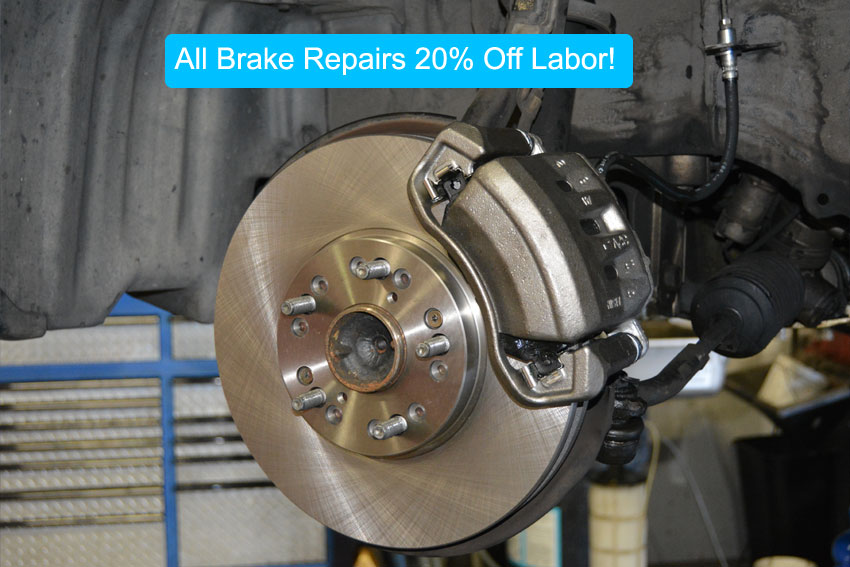
Honest Repair Services at Affordable Prices
SERVICES - Brake Repairs and Replacement
Brake Repairs in Rancho Cordova

Worn-out brakes can feel "mushy", grind, squeal or make the front end shake when coming to a stop. If this sounds familiar, your brakes are showing signs of extreme wear. It's not merely annoying, it could actually be dangerous.
Modern brake systems have evolved continuously over a span of more than 100 years, becoming increasingly efficient and dependable.
Your car or truck's brake system usually consists of disk brakes in front and disk or drum brakes in the back. A network of tubes, cables and hoses links the brake at each wheel to the master cylinder located in the engine bay. The parking brakes, power brake booster and the anti-lock system are also connected with the brake system.
When you step on the brake pedal, you are depressing a plunger inside the master cylinder, forcing hydraulic oil (also called brake fluid) through a series of tubes and hoses to the braking unit at each wheel. Fluids, including hydraulic oil, cannot be compressed, so pushing fluid through a hose is much like pushing a steel rod through a pipe. A steel bar couldn't negotiate all the twists and turns between the master cylinder and the brakes, but the fluid will get through just fine, carrying with it the same motion and pressure with which it started. It is essential that the fluid be free of dirt or dust and not contain any air bubbles. Unlike fluids, air can be compressed, which can cause a spongy feel to the pedal and greatly reduce your braking efficiency. If there is air in the system, it has to be bled off, using "bleeder screws".
On disc brakes, the fluid from the master cylinder travels through the tubes to a caliper where it presses against a piston. The piston then pushes two brake pads (one inside, one outside) against the disk/rotor. The disk is attached directly to the wheel, and as the friction of the brake pads on the disk slows its rotation, the wheel also slows down and stops.
Drum brakes use the an identicle principle, but what happens at the brake itself is reversed. Fluid is forced into the wheel cylinder (in place of a caliper), and the friction linings of the brake shoes are pushed outward against inside of the drum, which is attached to the wheel.
In either case, the friction surfaces of the pads on a disk brake system, or the shoes on a drum brake, will eventually be ground down to the point where there is insufficient material to stop or slow the car. Come in today for a brake inspection. It takes only minutes and it could save you big repairs later on!